
Gardening is inherently a witchy act. Connecting with the land, encouraging dormant seeds to life, and tending to the green world is everyday magic in its most raw form.
Although it is late in the season and gardening activities are slowing down, it is never too early to begin thinking about plans for new projects. With Halloween around the corner, it seems like the perfect time to plan a witch’s garden.
When you garden, you bring life force energy to the area around your home, create food for pollinators allowing us to grow food, and create homes for garden helpers, like toads, snakes, and spiders, as well as fairies and garden gnomes. If you grow edible plants yourself, you care for your body in the most fundamental way by feeding it healthy, nourishing plants.
What Makes a Garden Witchy?
In my opinion, any garden created by a witch or made with the intention of using the plants for any type of healing or spell work is a witch’s garden, even if it is full of vegetables.
Medicinal herbs and health-promoting flowers are a perfect addition to a witch’s garden, but they are not necessary. It is more about the intention than the actual plants.
However, I will share several ways to add some striking visuals and point out several plant varieties that would go well in a classic witch’s garden.

Design
Start by sketching a rough garden design based on your ideas of what you want your witch’s garden to look like and what kind of plants you want to grow.
As with every other kind of garden design, I always recommend focusing on plants that you enjoy and will use. Don’t just choose plants because they are “witchy.” Choose plants that you naturally connect with, use regularly, or are interested in developing a relationship with. You are putting time, money, and energy into this endeavor, so invest in those plants that are your true allies.
In my book, Witches’ Brews—Teas, Sauces & Other Potions: Old World Lore & Recipes from Hearth & Hedge, I share a ritual and other ways to discover who your plant allies are.
Another general rule is to position plants of like heights next to each other. Also, if you are thinking of incorporating poisonous plants into your garden, which we will discuss further down be sure to designate a separate area for them that is safe from children and pets.
When I think of my perfect witch’s garden, it is a small plot of land right outside the door of a forest cottage. It has plants that produce and bloom all year round. In functionality, it is much like a potager garden, a design that is not only practical but also beautiful and ornamental. My witch’s garden would also have a lot of whimsical aspects, including statues, like my beloved toadstools, chimes, and even fairy lights in the trees surrounding it. I would set up a table and chairs, so I could spend time writing in my garden or sharing a meal with family and friends.
However, my reality is that I live in an apartment with a very small and awkwardly shaped outdoor area. However, it has a gate in between two walls that make up the front entrance. The walls on either side have short wrought iron fencing on top of the cement bricks, so we’ve created our Secret Garden there, which is mostly a container garden with a vertical alignment. We bought two jasmine plants to weave through the iron fencing and have some small dwarf fruit trees in pots in addition to the flower boxes, also attached to the fence and gate. I have put some mini gnomes and toadstools in the boxes.
When we moved in, there were already a pomegranate and corbezzolo tree. So I hung mini lanterns on them.
Many witch gardens pay special attention to the shape and layout of the garden. Some like to create a garden as a circle or crescent moon. I also like the idea of incorporating an herb spiral as a focal point. But as I’ve just explained you can do a lot with whatever you have.

Focal Point
A focal point is a “must-have” in every garden. A bit of sculpture is a nice idea; you could choose a Green Man or gargoyle guardian or add an element of water by adding a small fountain or pond. Maybe set up a little bird bath surrounded by rocks and nectar-filled flowers. Be sure to add some salted sponges and put out some over-ripe fruit so they can recharge. This creates a little oasis for pollinators, many of which need the warmth of the sun to keep their little bodies going.
Pathways
Pathways are an essential part of any garden. In a witch’s garden, it is nice to make them visually stunning by using stepping stones or bricks. You can paint symbols, like runes or sigils on the rocks. Or you can connect with the element of earth and create functional, compostable, and cost-effective pathways by laying down layers of cardboard and newspapers, with a nice layer of mulch on top. It is a nice idea to have the pathways meander through your garden, so you can meditate as you walk.
Color & Blooming
Think about witchy color schemes, and incorporate black and purple plants. Helleborus, Physocarpus Opulifolius ‘Diabolo’, Black Laced Primroses, or Black Beauty elderberry are some great additions, as well as black roses, or hollyhocks, all common plants in a witch’s garden. If you live in a tropical garden zone, consider adding Tacca bat flower (Tacca chantieri). This exotic flower mimics a bat in flight.
But don’t forget to add some dark-colored edibles to the garden, too.
Another idea is to add several varieties of night-blooming flowers that are not only ghostly white but also fragrant, like moon flowers, night-blooming jasmine, Nicotiana alata, and Datura. Brugmansia is a small tree with large hanging flowers that only open for a week at a time in conjunction with the full moon.

What to Plant
When deciding what to plant, research your gardening zone; this will help you determine which plants you can easily grow in your area. You also need to consider the amount of sunlight your garden receives. Most herbs, flowers, and vegetables require at least 6 hours of full sun a day, but others do well in partial shade . So make sure you understand your particular plot of land and what will grow best there. The best witch’s garden is thriving and in accordance and harmony with the lay of the land.
Herbs
Most witch gardens incorporate herbs. Again, think about plants you already use and enjoy. If you like brewing your own tea blends, be sure to incorporate chamomile, roses, nettles, and lavender. If you want multipurpose kitchen herbs that also work well in spell work, think about adding sage, rosemary, and thyme.
If you want some witchy-sounding herbs to plant, try mugwort, snakeweed, or butcher’s broom. If you need more inspiration for what kinds of herbs to grow, check out my book, Witches’ Brews. It includes the history, folklore, health, and magical properties of about 30 sacred plants (especially ones from folklore and fairytales!) and includes 40 recipes for creating your own elixirs at home.

Flowers
Adding beautiful flowers to a witch’s garden, including some edibles, is always lovely. I have a love affair with roses and believe they are invaluable to any garden. All rose petals are edible. For a witch’s garden, try some of the older varieties, which smell fantastic. Other lovely edible flower varieties include violets and saffron crocus. Add some snapdragons – not only do they have a mythic connotation in their name, but when they are dried, they look like little skulls.
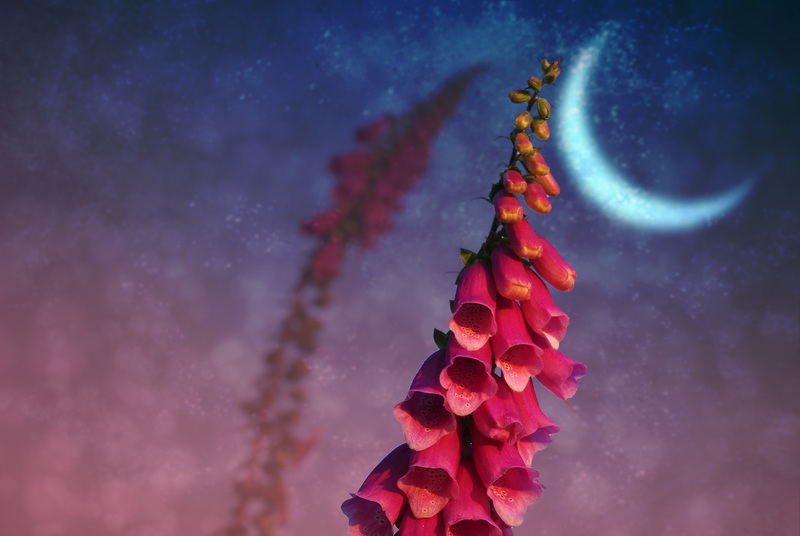
Poisonous Plants
Some beautiful flowers are also highly poisonous, like monkshood, foxglove, belladonna/nightshade, and datura/devil’s trumpet. These are usually associated with spellwork, but they should not be planted unless you have a particular interest in them, and I do not recommend planting them if you have children and/or pets. You may also need to check local regulations to see if there are any legal issues with growing them.
If planting both edible witch herbs and poisonous plants, please ensure that the edibles are clearly separated from the toxic plants and are clearly labeled to avoid any painful outcome.
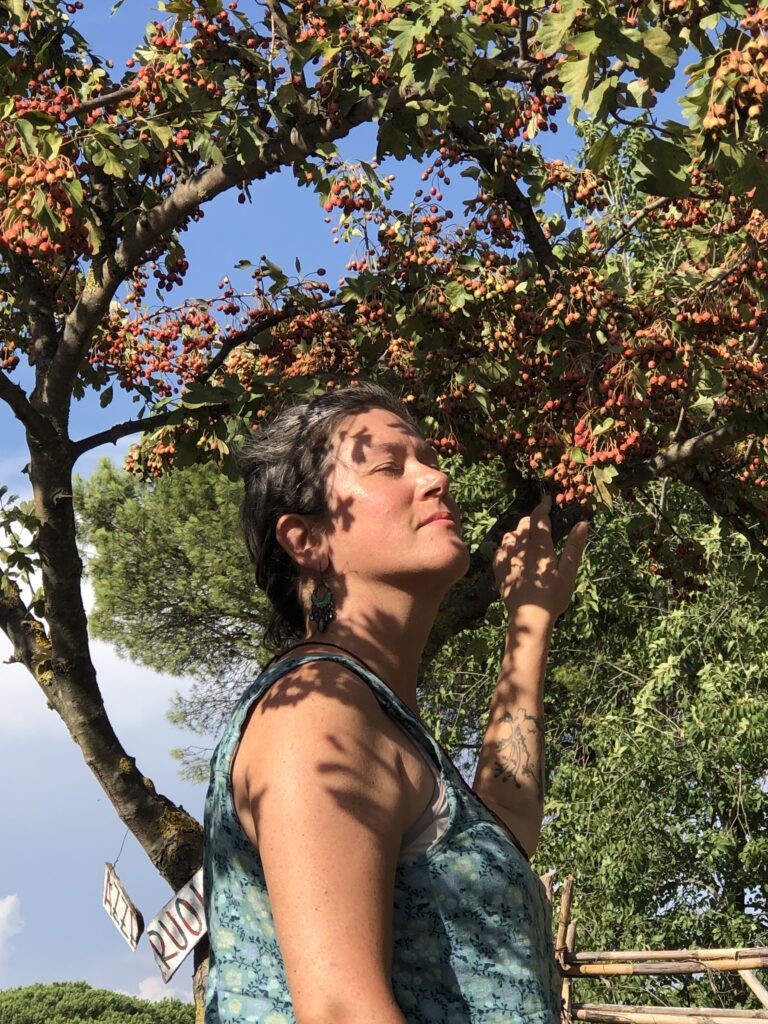
Trees
Many trees have magical properties, like apples, hazels, blackthorn, hawthorn, and rowans, so you might consider growing some. They provide an excellent border, and many produce delicious edibles, too!
Read all about the magic of thorny plants – Hawthorn & Blackthorn
Gardening with the Moon
Many people like to plant and garden by the phases of the moon; even the Farmer’s Almanac recommends it https://www.almanac.com/astronomy/moon/calendar. This is a really lovely way to maintain a witch’s garden.
Here are some general tips:
- Always plant during the new or waxing Moon phase.
- Trees, as they are perennials and must develop strong roots to remain alive, are planted during the waning Moon.
- Flowers or those herbs specifically valued for their blossoms, like lavender or chamomile, are best planted during the waxing moon.
To find the phases of the Moon and its daily astronomical sign, consult an astrological almanac.
Ritually Prepare the Ground
When planting a witch’s garden, especially when getting ready to harvest, it is crucial to do it with the intention of giving back.
One way to do that is to prepare the soil with compost or well-rotted organic material. In this way, you give the plants what they need first, so they can provide you with what you need in return. To solidify this harmonious relationship, you can carve the rune Gebo, which looks like an X, into garden beds or decorative pots. Gebo symbolizes gifts and the law of reciprocation. Then ask the land and spirits of the land for their blessing on your new venture.
Remember to fertilize your garden with organic fertilizers every couple of months. I like to use fish emulsion. It is stinky, but plants love it, and you will love how it helps your garden grow!
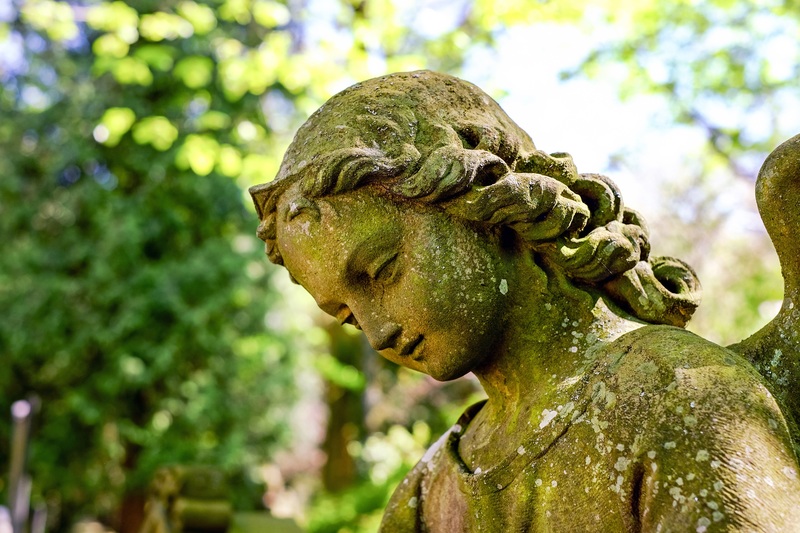
Decorations
Decorations are a nice touch in a witch’s garden. As I mentioned above, in my perfect witch’s garden, there are lots of whimsical elements. You might like strategically placing glow-in-the-dark orbs, lanterns, or chimes in the garden. I also like stringing small twinkling lights in the trees or shrubs.
Creating an altar with a meditative space is also an excellent idea. It can be something as simple as a nice rock, one for the altar, and one to sit on, or you can make it elaborate with outdoor furniture. In one of my gardens, I planted an area with flowers and herbs that reminded me of my ancestors – some were plants I associated with specific people (a favorite flower or herb) and others with my heritage, like globe thistles for my Scottish roots.
Rain Barrel
It is nice to have a rain barrel near the garden for watering purposes. Be sure to pull a large bucket full of water out for every full moon and let it stand in the moonlight. Then you can use it as part of a daily ritual practice (see below).

Protect Your Garden
Doing a protection ritual around your garden is an important step. I did a protection ritual around my garden and homestead twice a year when we lived in Vermont. Even though we lived in an area overrun with deer, full of coyotes, and a resident bear in the woods that my neighbors often saw, none of them ever disturbed my plants or livestock.
I did a simple ritual using salt water and a birch twig with leaves. I usually performed this ritual at Mabon, or the Autumn Equinox, and again at Imbolc. The Autumn Equinox marks the time when in colder climates, we begin to spend more time indoors. So, it is a good time to re-establish positive energy and dispel any stagnant or negative energy that may have accumulated during the previous season.
This ritual is similar at Imbolc, a time when the earth begins to stir in anticipation of spring. I would dip my birch branch in the salt water and use it as a wand to sprinkle the protective water creating a boundary around the homestead as a whole. Then I would continue into the gardens, outbuildings, and finally, our house.

Land Spirits
The spirits of the land, known to some as wights and to others as fairies or gnomes, are important to consider when tending your witch’s garden. I view the spirits of the land in distinct groups, but I won’t go into that cosmology here.
Suffice it to say; when these beings are remembered and tended to in addition to the garden, your plants will thrive. That is why I build fairy houses , and set toadstools out in my various gardens to let the little folk and other spirits know they are welcome.
I often leave offerings of cream, honey, or shining shimmering objects (like the twinkling fairy lights or glow-in-the-dark orbs) to thank them for keeping my plants free from disease and from the harm of natural disasters like hail, windstorms, and the like.
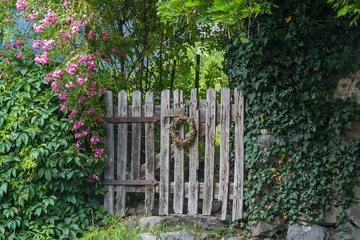
Garden Rituals
Your witch’s garden should be a magically charged place. You have created it with intention, augmented and ritually charged the soil the plants grow in, and asked for the blessings of the land and its spirits.
Therefore, your garden is the perfect place to perform any kind of ritual, especially if you have set up an altar and meditation space.
Each day go out and survey your garden. Close your eyes and literally smell the roses and other aromatic plants. Touch the plants and see that they are free of disease or harmful pests. Thank them for keeping you and your family nourished and cared for.
If you are harvesting plants, thank the plants before you take them, and do so again when you use them for their final purpose, whether it is spell work, cooking, or creating a home herbal apothecary.
Once a month, after the night of the full moon, water your garden with the charged moon water. Your plants receive the moon’s energy daily, but the roots don’t get a direct hit. By watering them with full moon-charged water, they will take in that increasing energy to promote them to act in kind.
Related Posts
Hearth Magic: Portal to the Otherworld
Rowan: The Sacred Witch Tree
Thorn & Hedge Magic for Spring
Artichoke Magic
Befana, The Winter Witch

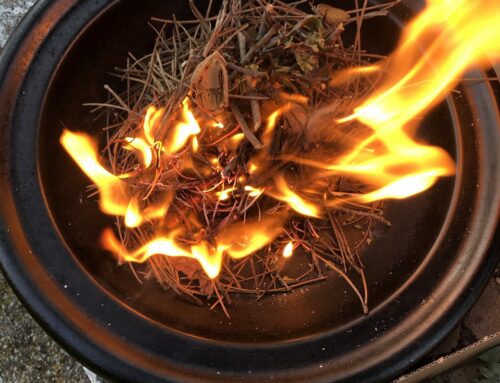
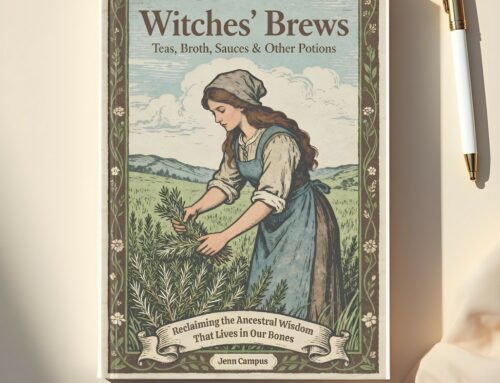



Thank you. This was all very interesting.
You are most welcome!
I just came across this and it was Exactly what I was looking for. So much invaluable information. Thank you so much for sharing your wisdom and knowledge.
I’m so happy to hear it helped you!